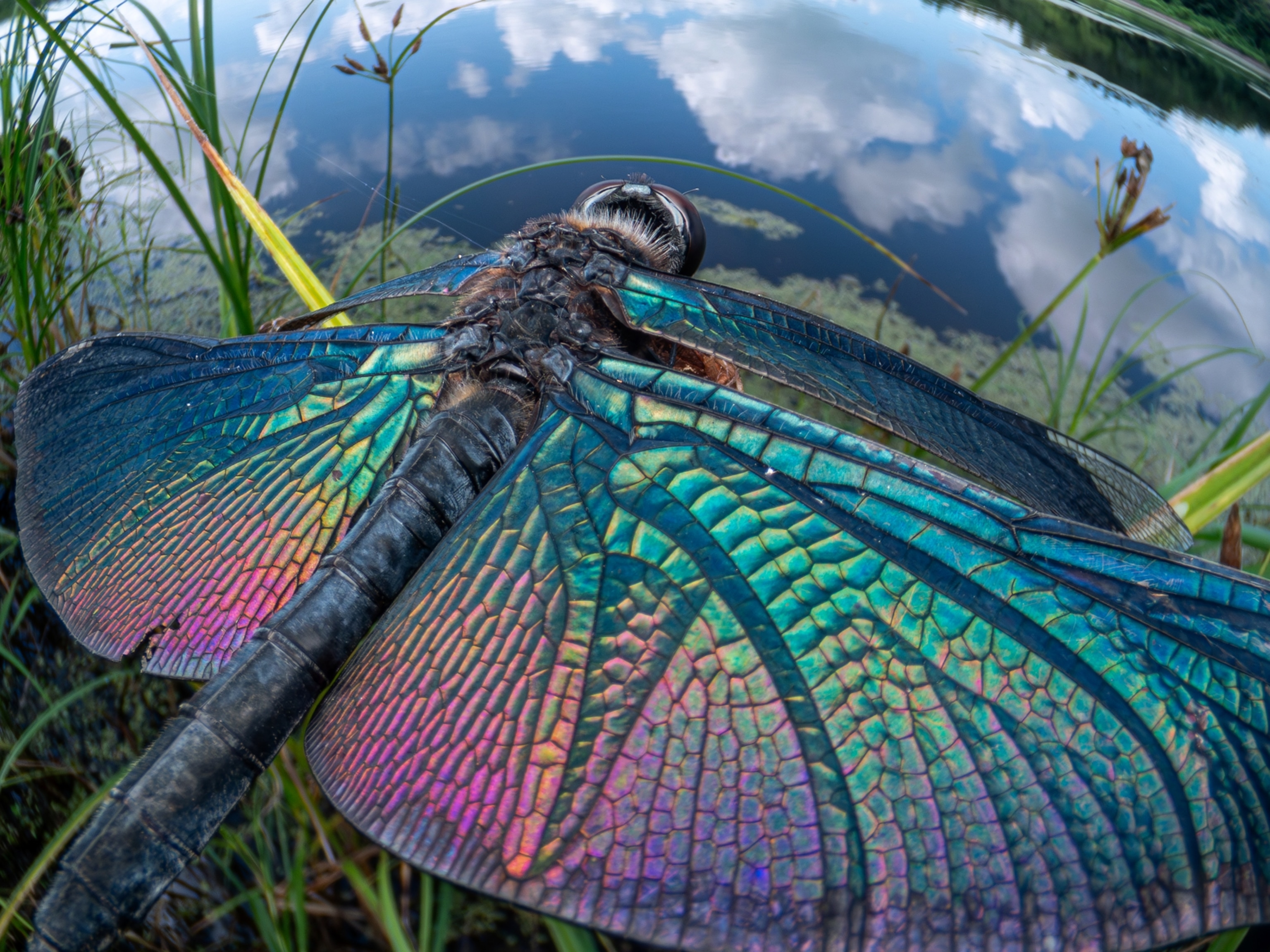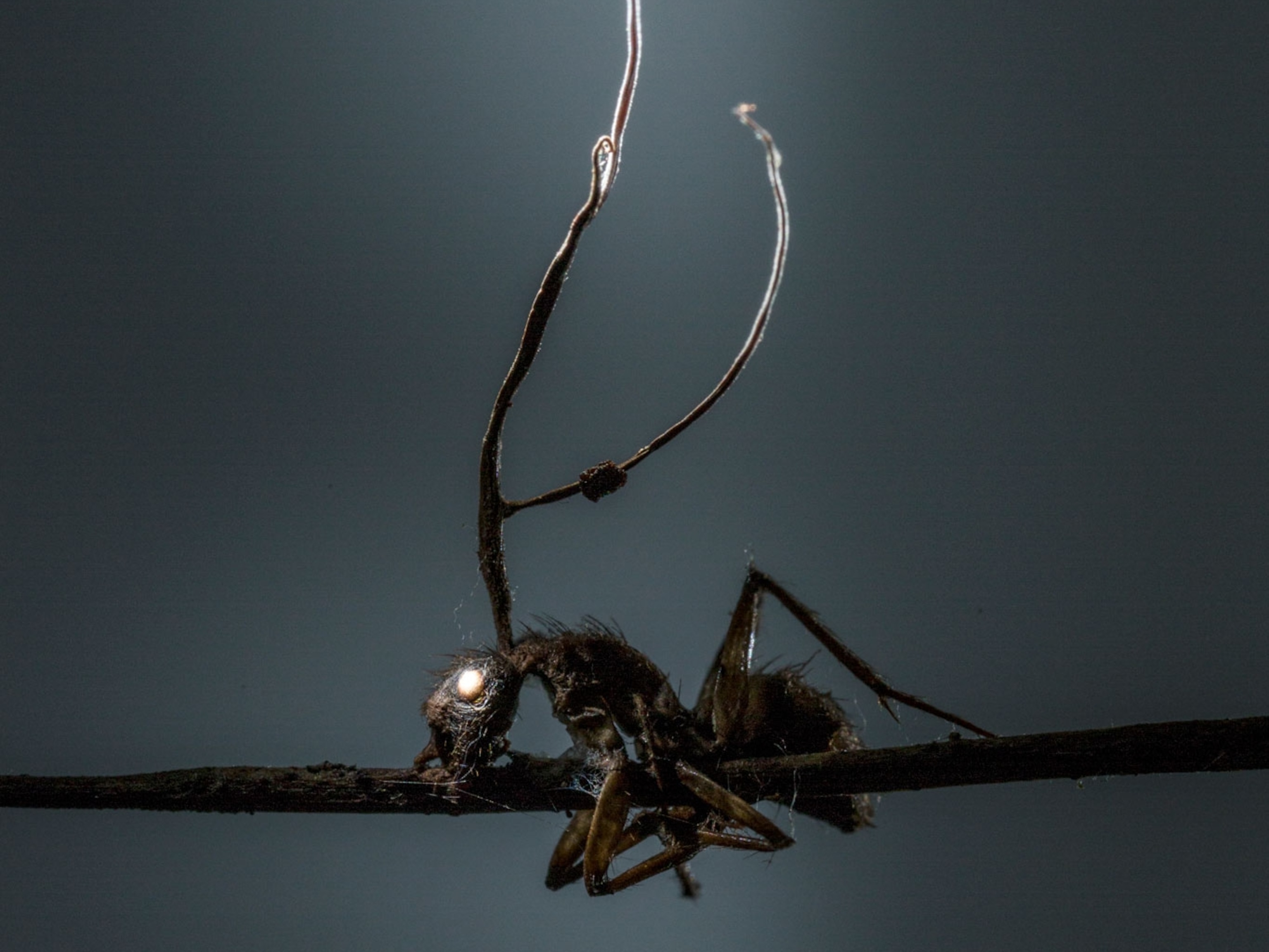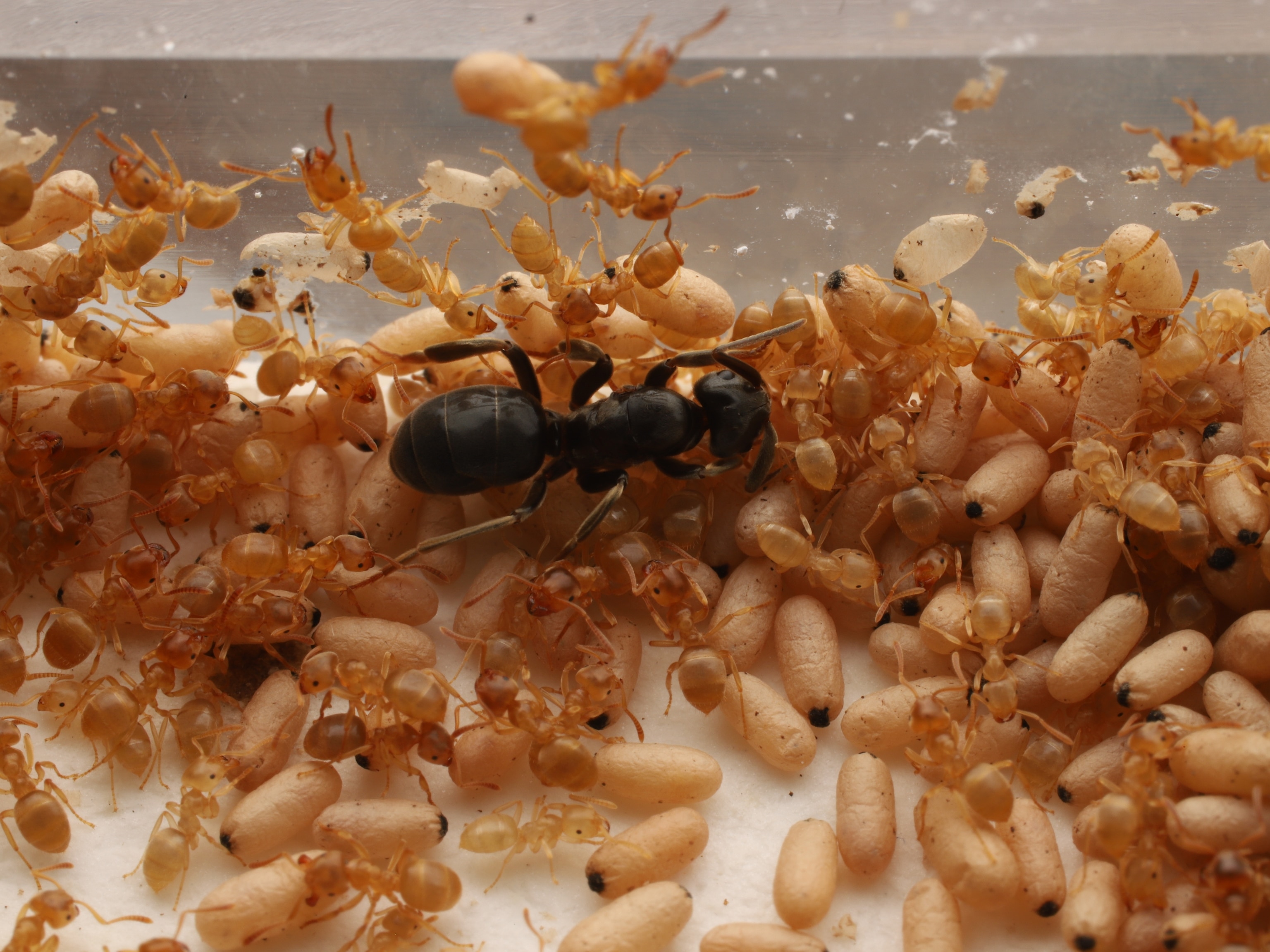Zombies aren’t real—or are they? Meet 5 parasites that use mind control
It's no Halloween movie: These parasites can hijack the brains of other creatures—and make them act in horrific ways.

Zombies may still be a thing of fiction, but some parasites more or less turn their hosts into the walking dead.
These masters of mind control manipulate their hosts from within, causing them to act in self-destructive ways that ultimately benefit the parasite.
"Some parasites can alter the behavior of their host in ways that give the parasite a better home, or provide more nutrients, or cause the host to move to a different environment," said Janice Moore, a biologist at Colorado State University in Fort Collins.
(How a parasitic fungus turns ants into "zombies.")
This strategy seems to work, she added: "A parasite that can alter the behavior of its host, and in doing so improve its own transmission, is going to be favored by natural selection," she said.
Here's a selection of a few parasites and the hosts they turn into zombies. Read on—if you dare.
1. Web-slinging Costa Rican wasps
Females of the Costa Rican wasp Hymenoepimecis argyraphaga lay their eggs on the abdomens of unlucky orb spiders called Plesiometa argyra.
After living off its host for a few weeks, the wasp larva injects a chemical into the spider that makes it build a strange, new kind of web, unlike anything it's built before.
(Here's how parasites hold our ecosystems together.)
But this new web isn't for the spider: It's meant to support the cocoon that the wasp larva will build after finally killing and eating the spider.
2. Jewel wasps and zombified cockroaches
When the female jewel wasp is ready to procreate, she finds a cockroach to serve as a living nursery for her young.
First she injects a toxin into the roach that paralyzes its front legs. Then the wasp strikes again in the roach's head. Frederic Libersat of Ben-Gurion University in Israel and colleagues discovered that the venom targets a specific area of the brain responsible for initiating movement.
(See the graphic novella "Sting of Doom" from our November 2014 issue.)
Stripped of its ability to move of its own free will, the cockroach can be grabbed by the antenna and guided to a burrow, where the wasp will lay her egg on the victim and entomb them together.
The wasp larva slowly consumes the cockroach for several days before pupating in its abdomen, emerging as an adult about a month later.

3. Mind-controlling flatworms
As an adult, the lancet liver fluke—a type of flatworm—resides in the livers of grazing mammals such as cows.
Its eggs are excreted in the host's feces, which are then eaten by snails. After the eggs hatch inside the snail, the snail creates protective cysts around the parasites and coughs them up in balls of mucus.
(This parasite manipulates the minds of wolves, rats—and maybe even you.)
These fluke-laden slime balls are then consumed by ants. When the flukes wiggle their way into an ant's brain, they cause the insect to climb to the tip of a blade of grass and sit motionless, where it's most likely to be eaten by a grazing mammal. That way, the liver fluke can complete its life cycle.
4. Flatworms and a fishy dance of death
The fluke Euhaplorchis californiensis begins its life in an ocean-dwelling horn snail, where it produces larvae that then seek their next host, a killifish.
Once it finds a fish, the parasite latches on to its gills and makes its way to the brain. But this isn't its final stop.
(Learn more about how these parasites manipulate their prey.)
The fluke needs to get inside the gut of a water bird in order to reproduce. So inside the killifish's brain, the fluke releases chemicals that cause the fish to shimmy, jerk, and jump.
Jenny Shaw and colleagues at the University of California, Santa Barbara, found that the parasite decreases serotonin and increases dopamine levels in the fish's brain. The switch in this brain chemistry stimulates the fish to swim and behave more aggressively.
These moves attract the attention of birds, which may eat the fish—and the flukes. The flukes mate, and their eggs are released back into the water in the bird's droppings to be eaten by horn snails and start the cycle anew.
5. Hairworms and suicidal crickets
Hairworms have a perpetual challenge: They infect landlubbing insects like crickets, but the parasites must make their way to an aquatic habitat in order to reproduce.
Researchers at France's Centre National de la Recherche Scientifique figured out how they accomplish this feat. Hairworms produce mind-controlling chemicals that cause their cricket host to move toward light. Because water bodies reflect moonlight, this often sends crickets toward lakes and streams.
The crickets jump in and drown, and the hairworms emerge, ready to find their next victim.





